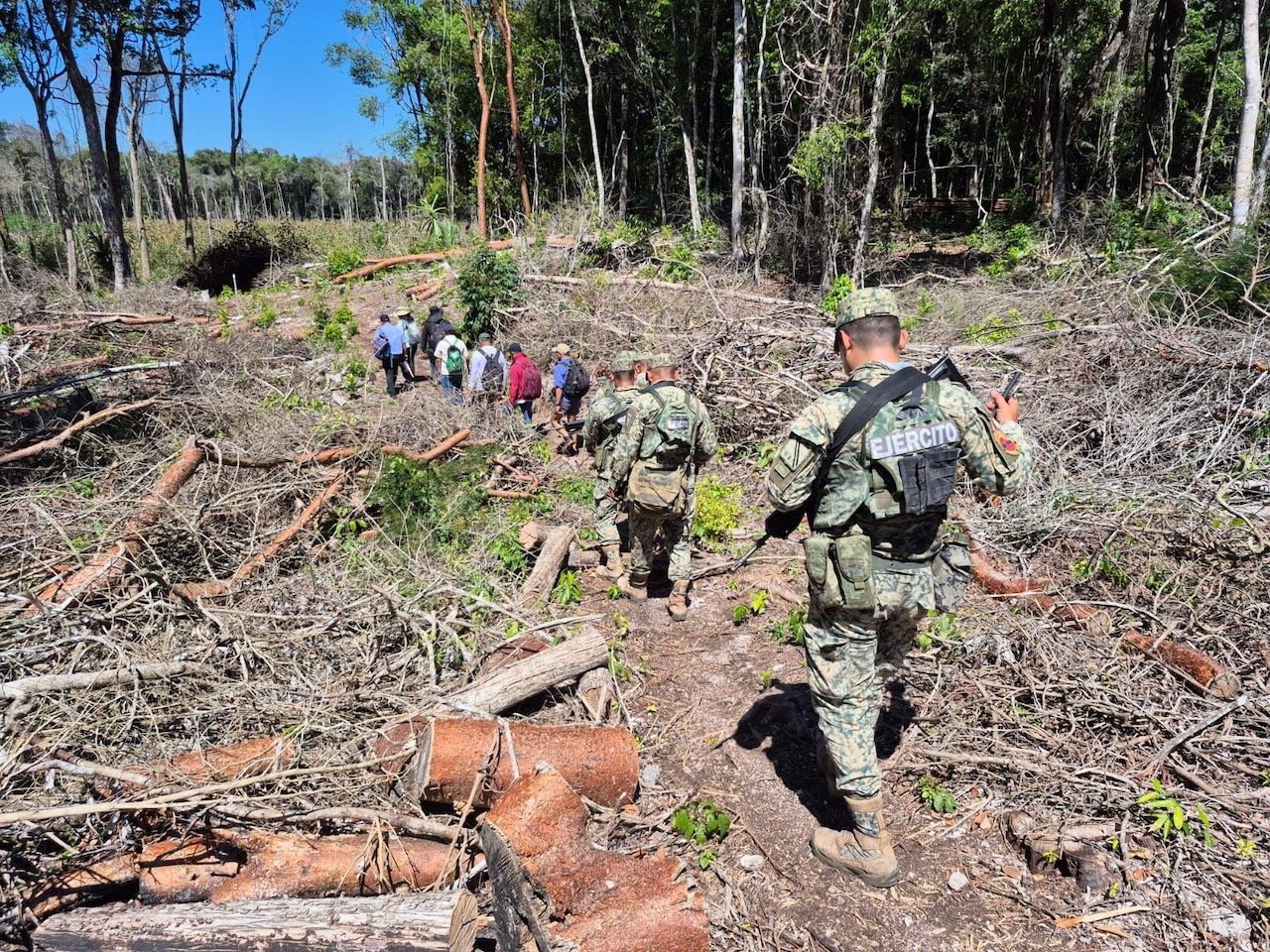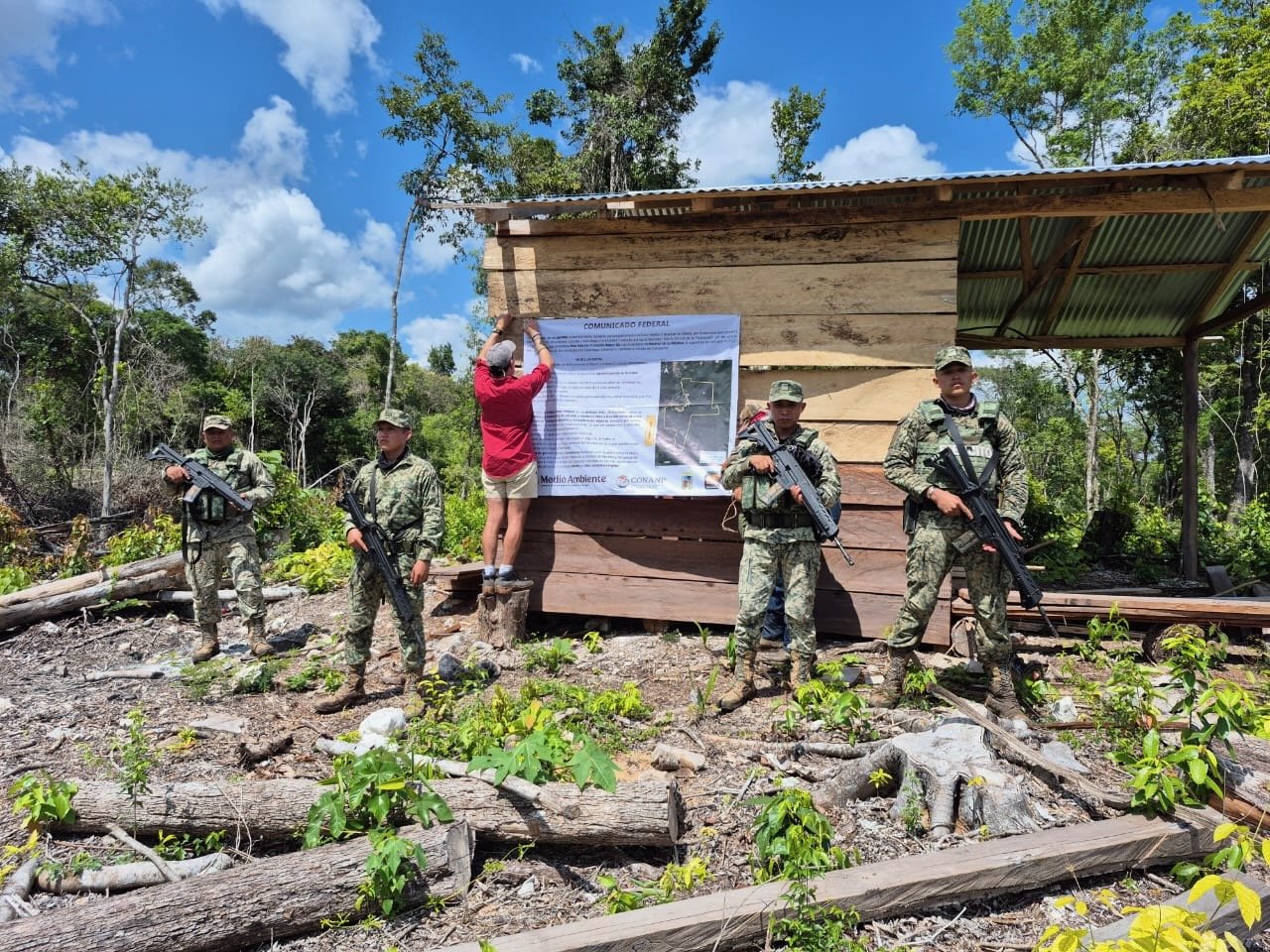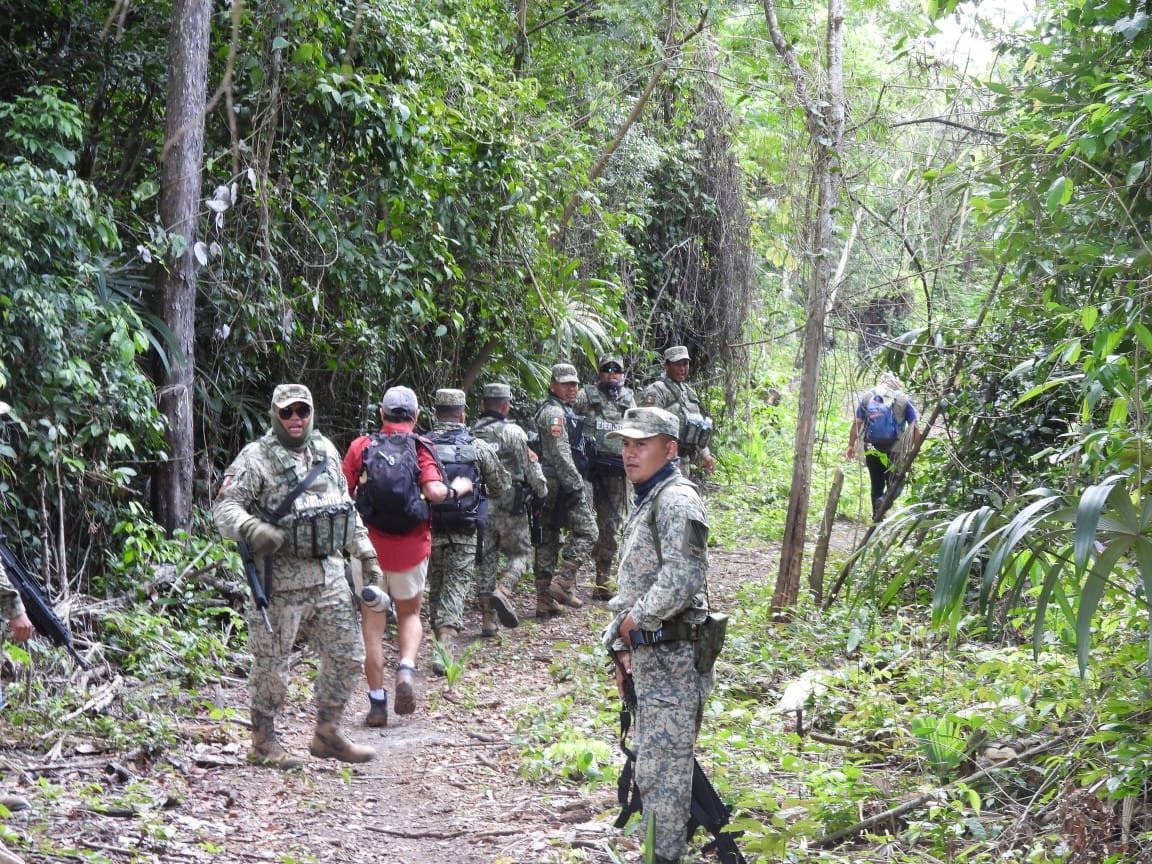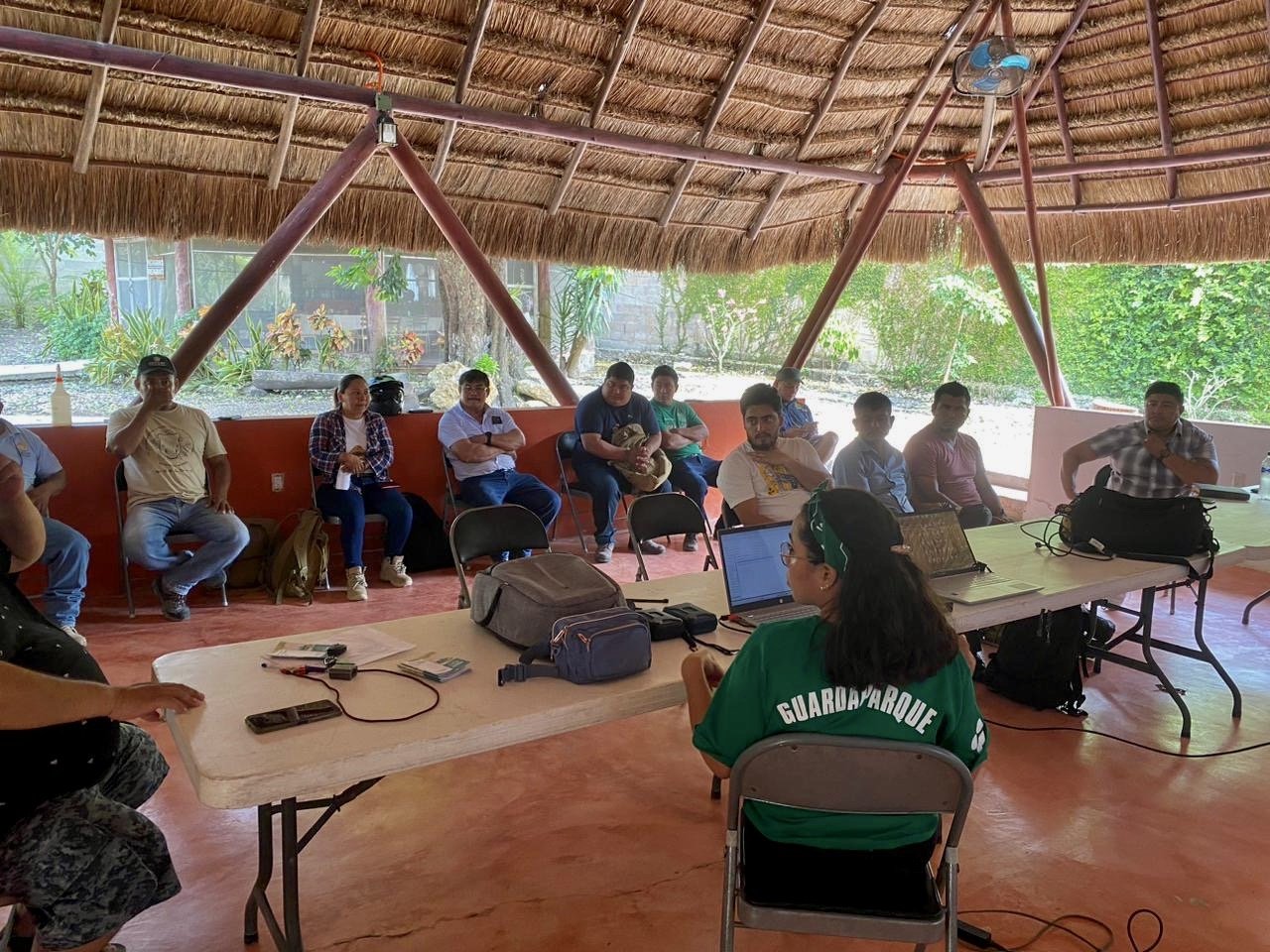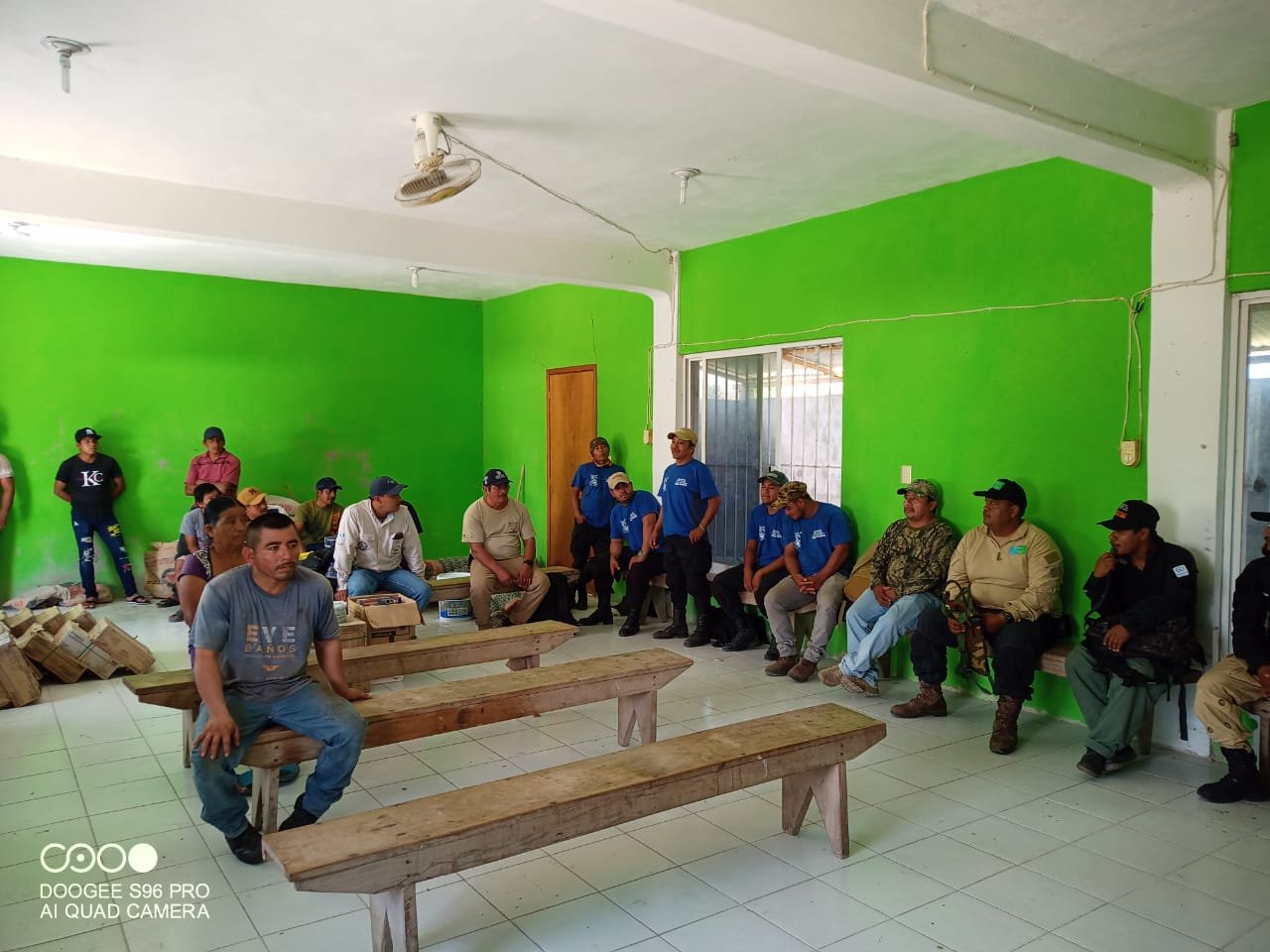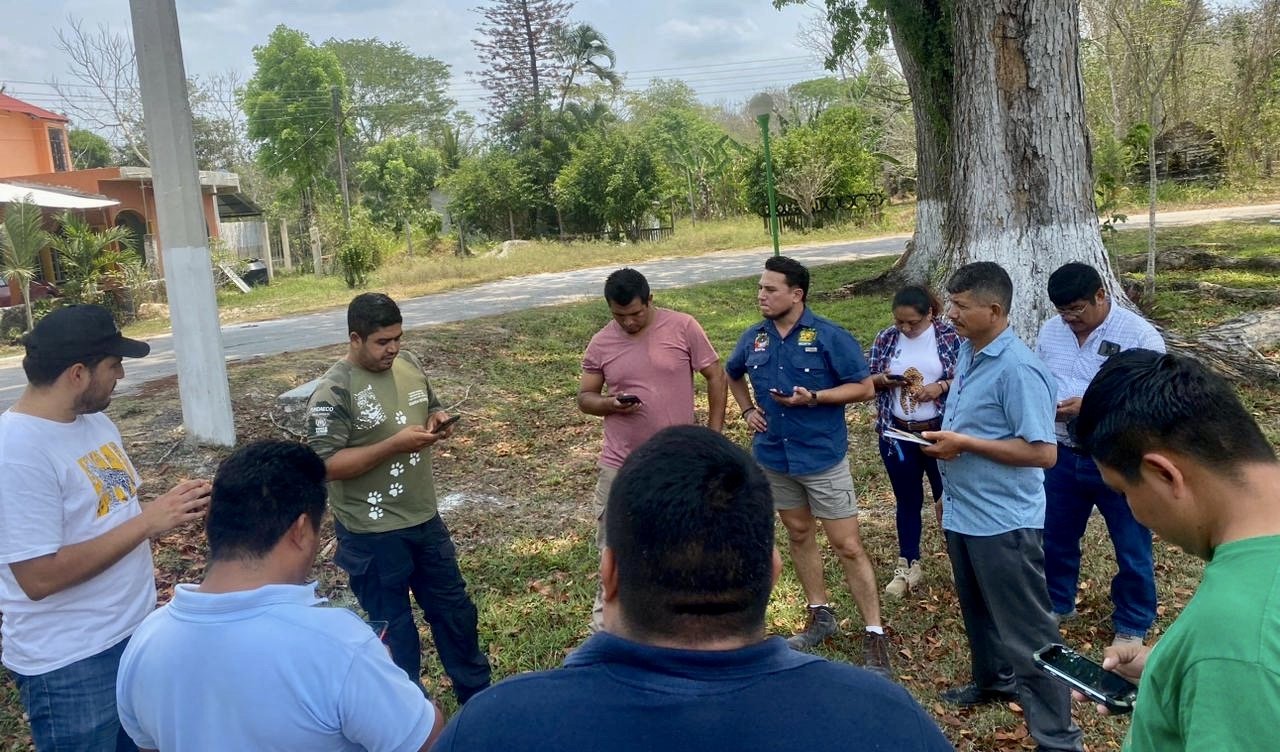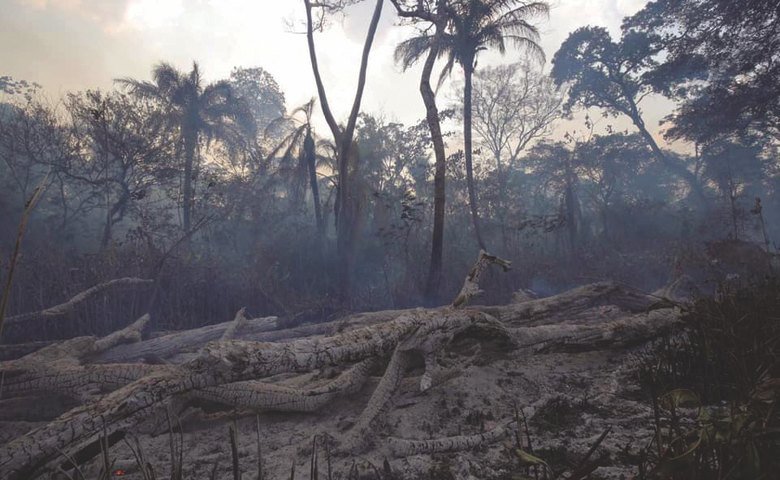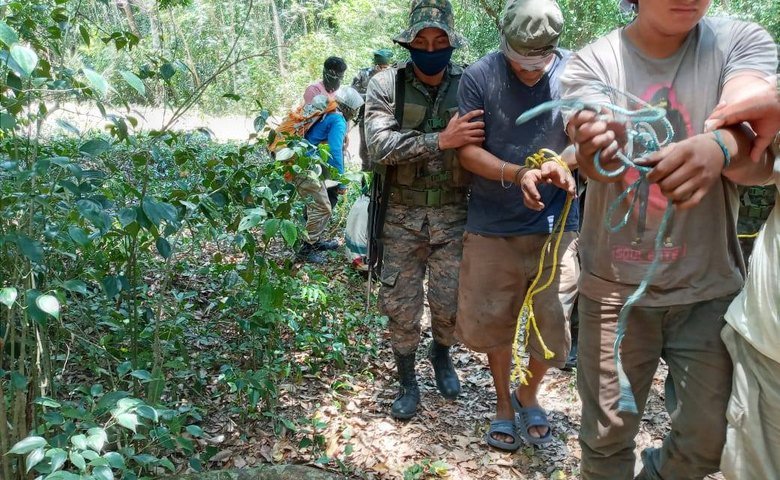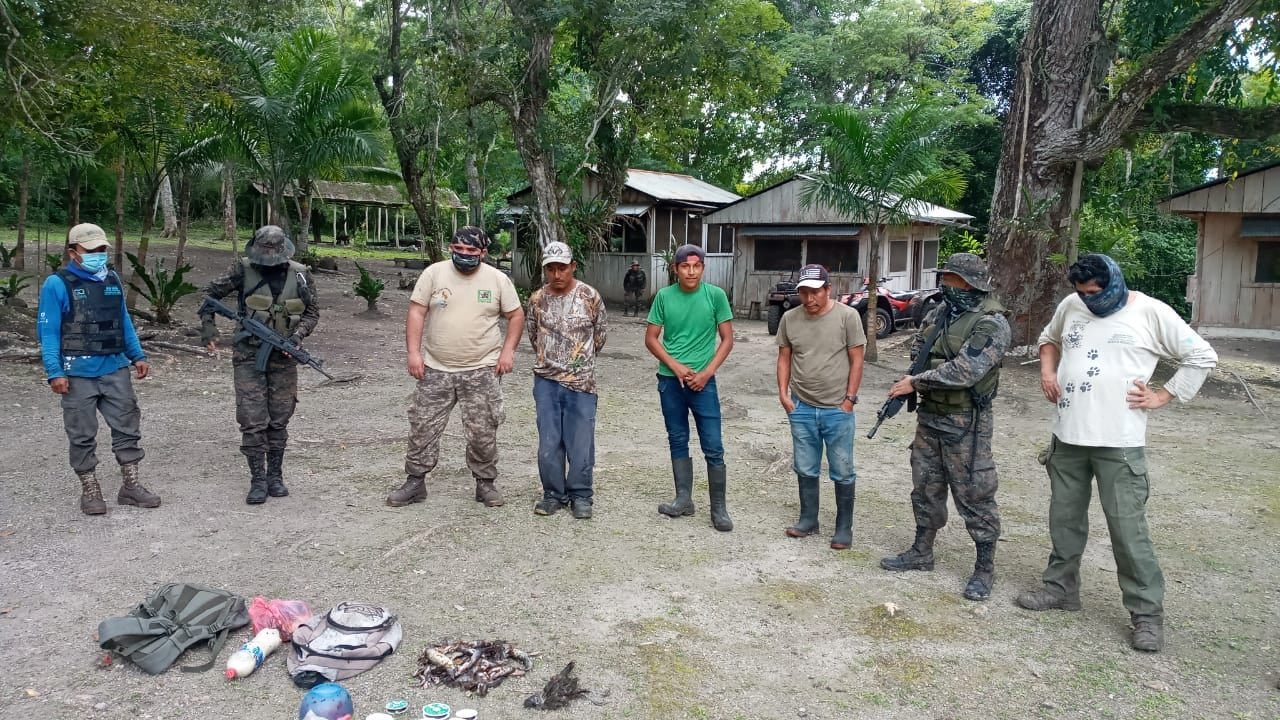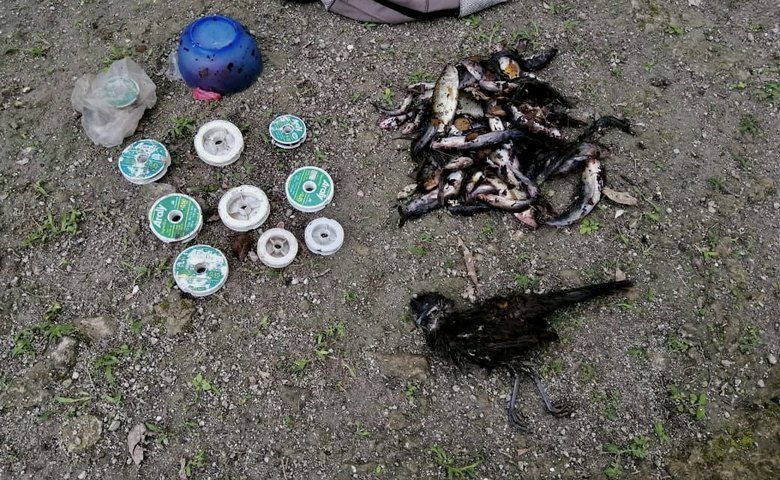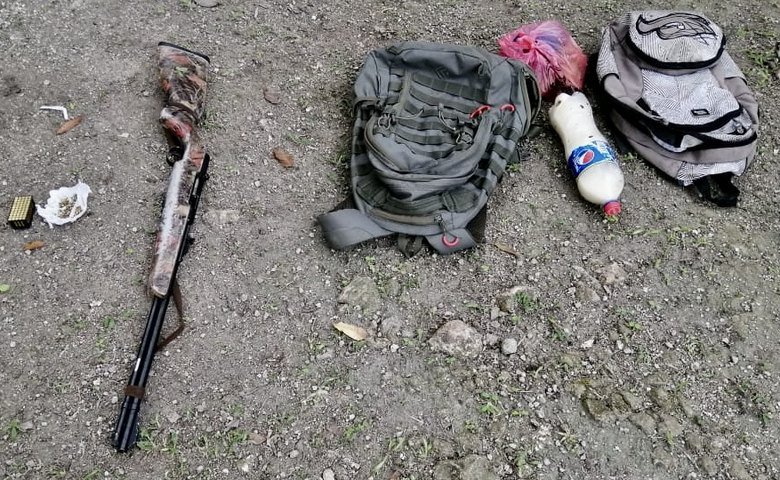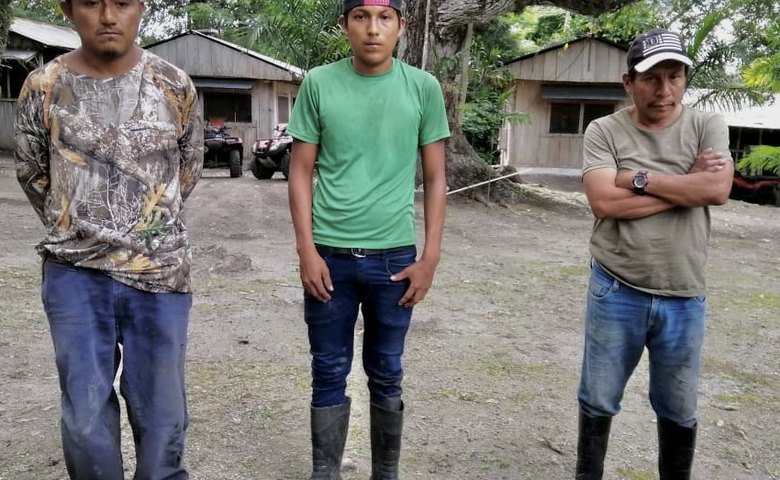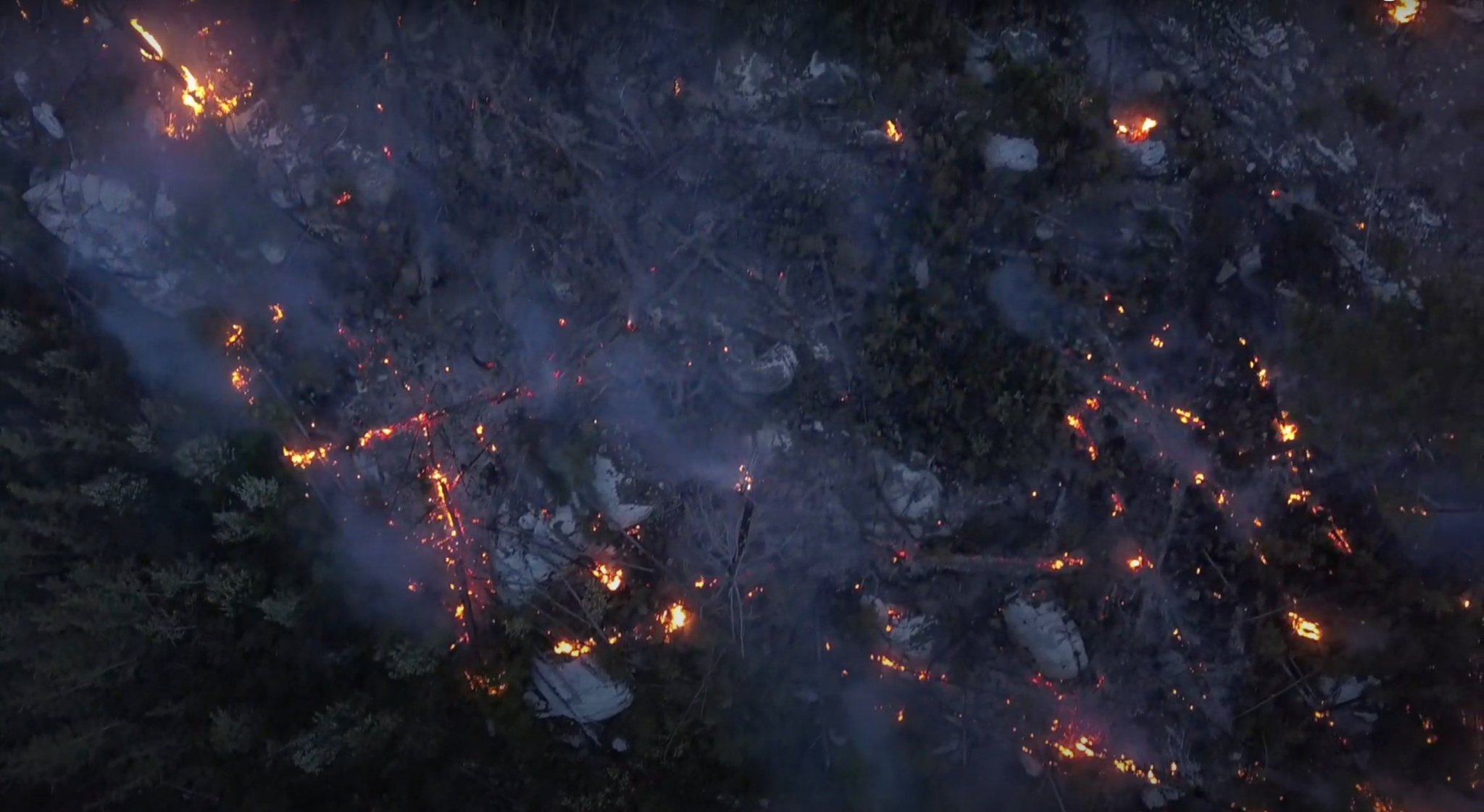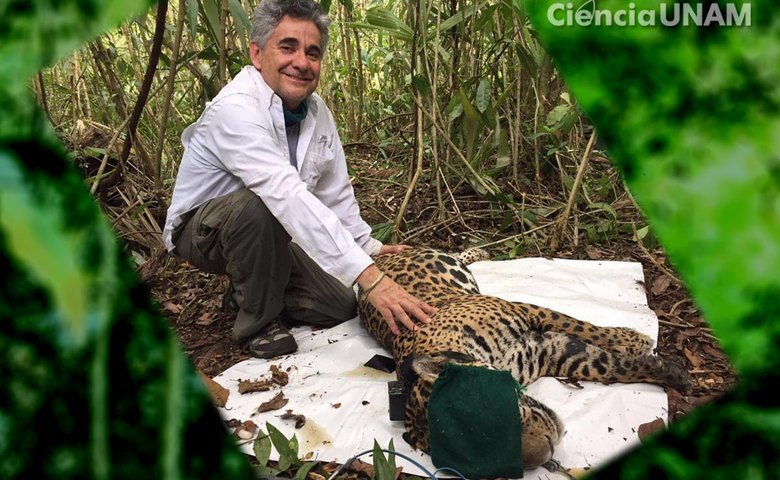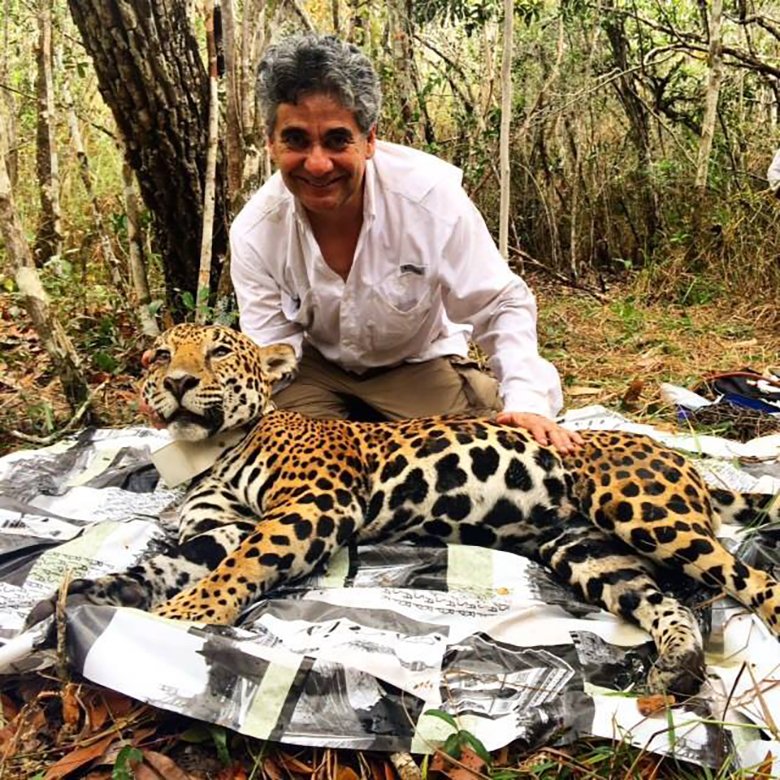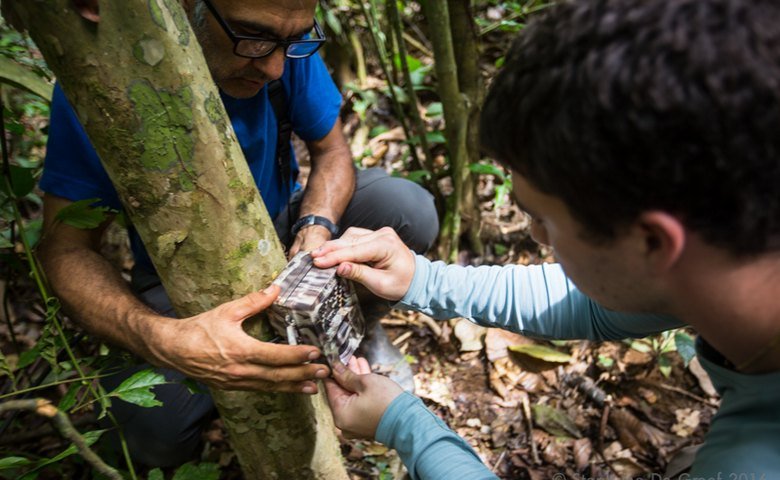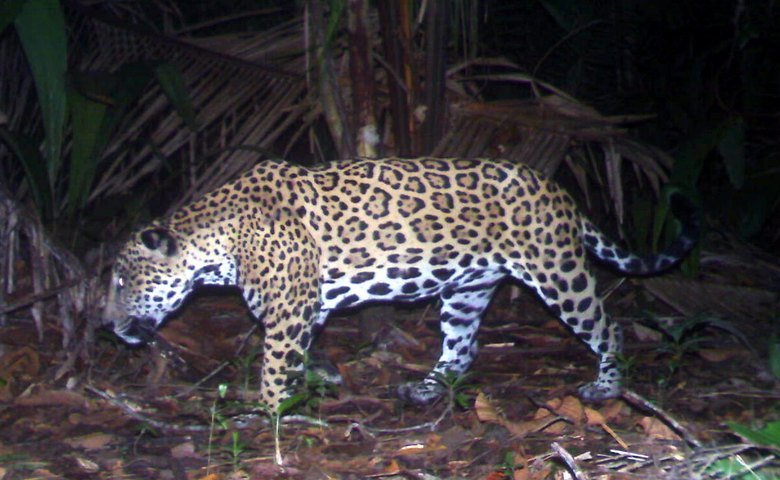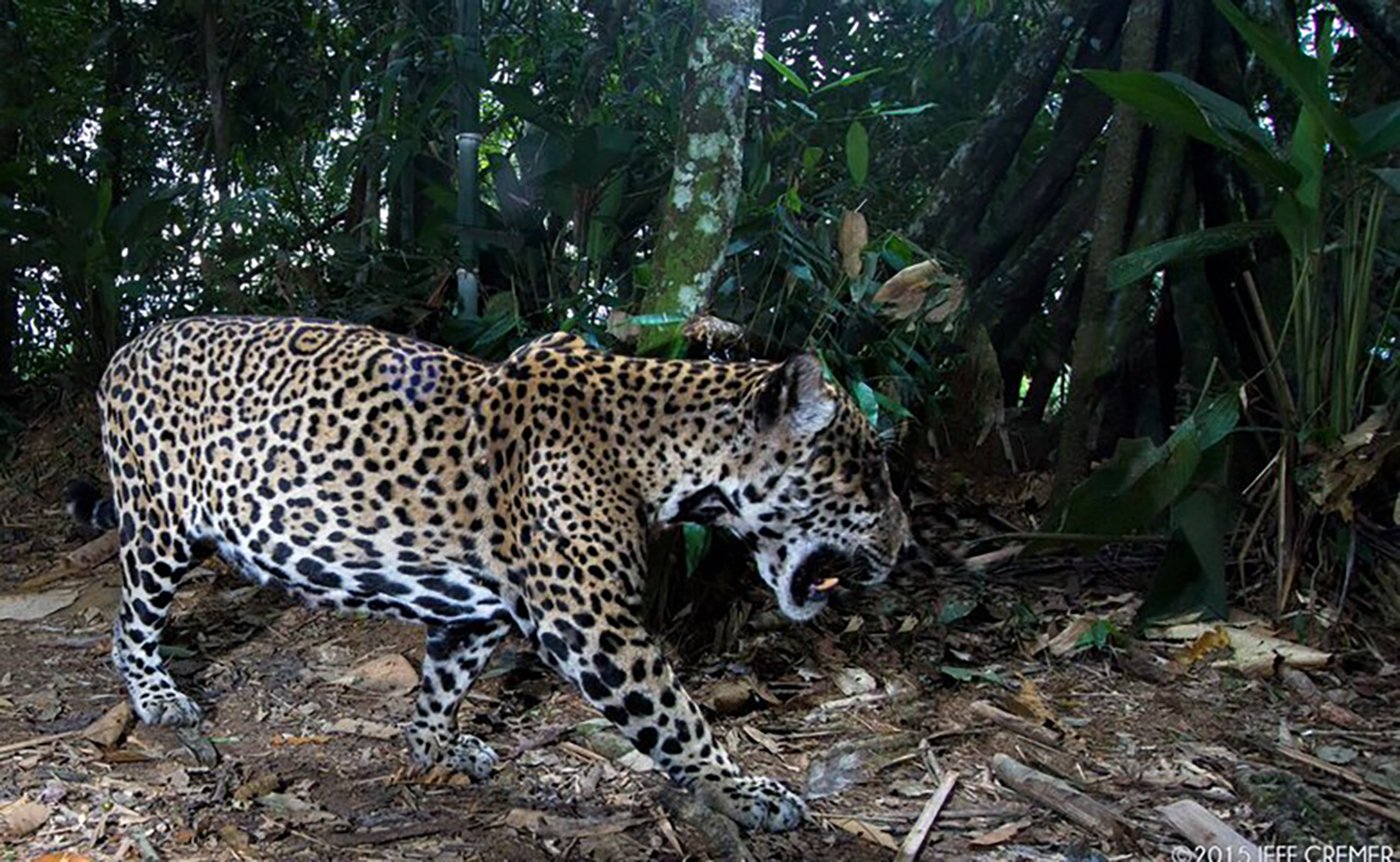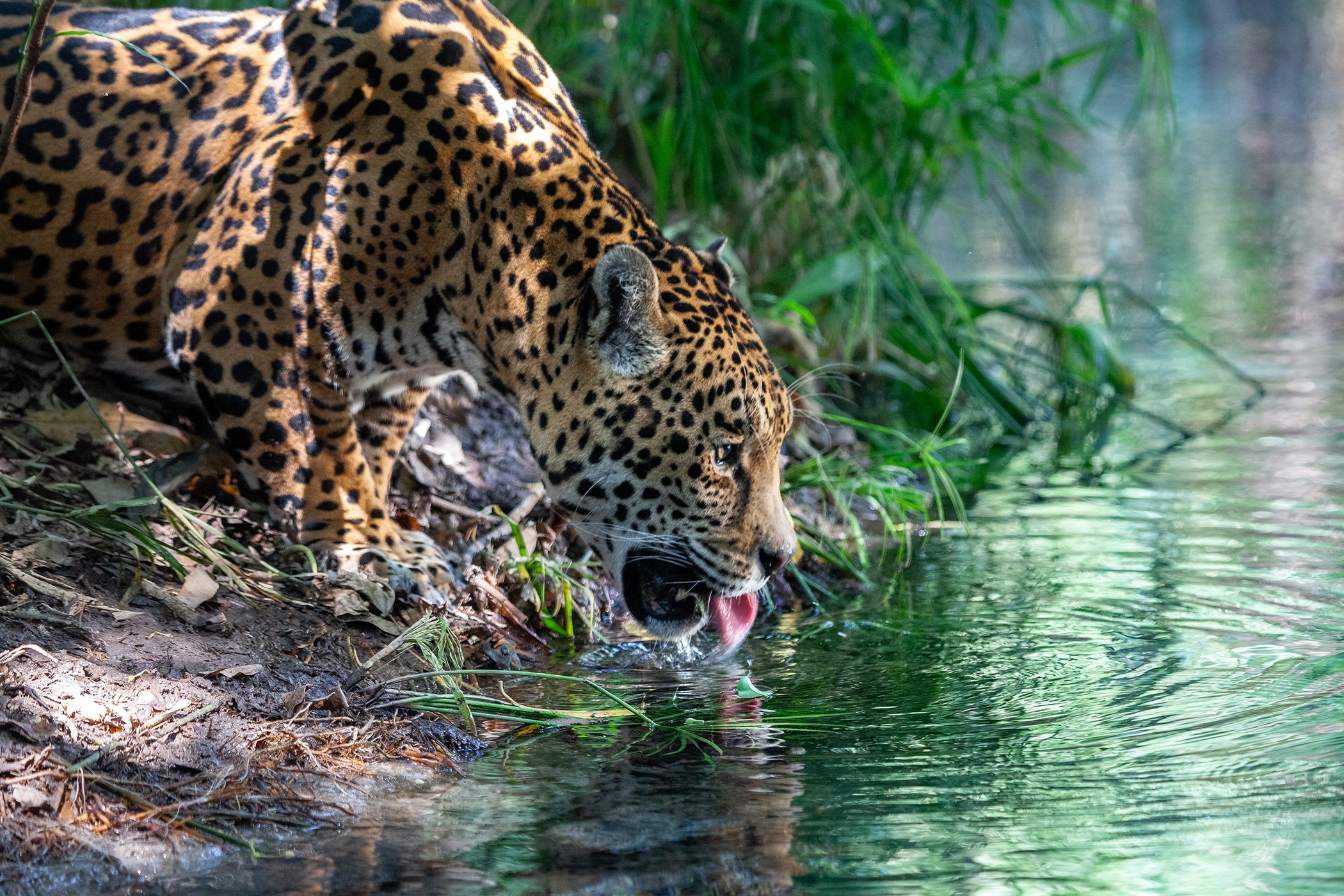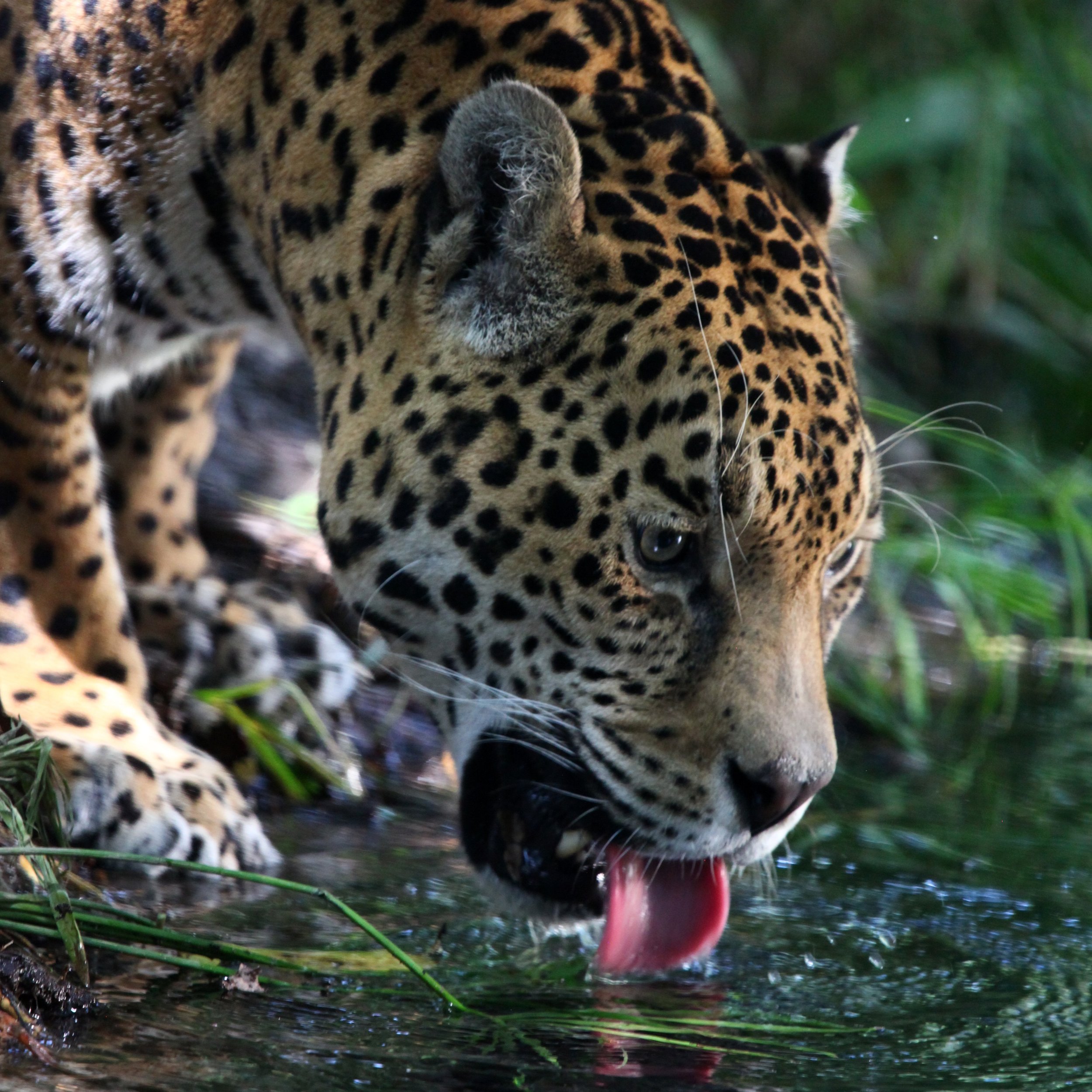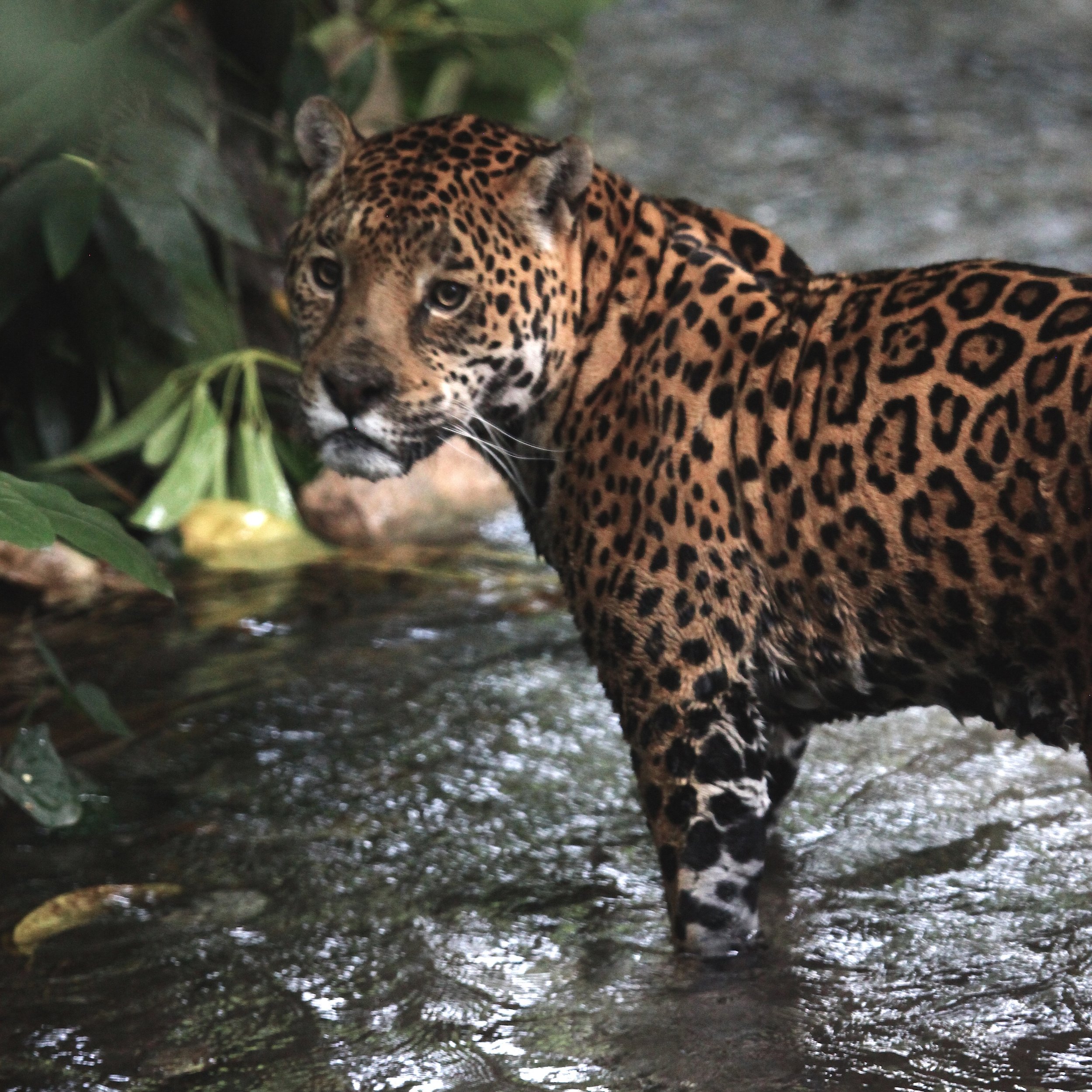GC Fighting Land Invasions into Calakmul Biosphere Reserve, Mexico
Updated 03/27/25
In the Balam Kú Biosphere Reserve, which was designated a protected natural area in August 2023 in order to extend protection to the Calakmul Biosphere Reserve, members of the Francisco Villa Popular Front have destroyed at least 70 hectares of Mayan jungle to make way for homes, agricultural fields, and livestock pastures.
Before it's too late, these unlawful encroachment and biodiversity damage activities within Protected Areas must end right away. With deforestation for maize crops and, later, animals, fresh incursions have made frightening progress in southern Balam Kú since 2024.
The members of "El Corazón de la Selva Maya" criticized the prospect that drug trafficking might eventually use this circumstance and utilize these locations for their illegal activities. In order to distribute drugs to Europe and the Middle East, Mexican gangs established themselves in Africa. In order to continue establishing their ranches, the complainants claim that about 70 families from Guatemala, Chiapas, and Tabasco who identify as members of the Francisco Villa Popular Front have already cleared about 70 hectares of forest. They anticipate starting to burn the forest material in the days ahead.
Two months ago, YouTuber Peter Quip Che posted a video in which he describes the location of the road, the school, and his neighbors' homes, which will be part of the Nuevo Canaan ranch, while a chainsaw can be heard. The video shows a panorama of fallen trees in the middle of the Mayan jungle, in what is thought to be the Balam Kú Biosphere Reserve, in the municipality of Candelaria, Campeche.
"This is the avenue, which has been cleared, and this is Nuevo Canaan. This is the entrance of my small, five-star home." This is the Nuevo Canaan ejido's panorama," he brags.
The group "The Heart of the Mayan Jungle" consists of activists who safeguard the villages of Fundaeco, Mirador-Río Azul National Park, Biotopo Dos Lagunas, and Calakmul in Guatemala; the Río Bravo and Fondo de la Selva Maya communities in Belize; and the Calakmul, Balam Kú, and Balam Kin communities in Mexico. They have made a strong appeal to the governments of Belize, Guatemala, and Mexico to take prompt action to prevent this grave issue from getting worse.
The invasions in the central region of the Balam Ku Reserve and the danger that they could spread down the border, reaching as far north as Mirador-Dos Lagunas in Guatemala and as far south as Calakmul in Mexico, are of great worry to us.
In their management and decision-making about projects within the Mayan Rainforest, they also encouraged the Conservation Expert Group (GEC) authorities to set aside emergency efforts and resources to sustain the presence and continuous patrols of park rangers from the three nations. "There is still time to prevent this enormous disaster, but we have to take action now because it will be too late tomorrow."
International conservation expert Dr. Gerardo Ceballos has stated repeatedly that the Calakmul region, which is home to the jaguar, is the most diversified area of Mexico.
CONAP denounces the logging and burning of trees in the Maya Biosphere Reserve
A public complaint about illegal logging in the Maya Biosphere Reserve (MBR) in the Petén department has been released by the National Council of Protected Areas (CONAP). The nature protection agency claims that encroachments, illegal logging for livestock farming, and other unlawful activities continue to pose a threat to the RBM. "Illegal logging in the RBM is catastrophic because it seeks to destroy vegetation and wildlife habitat," stated CONAP.
Forests On Fire
Conap also criticizes "unscrupulous" people for burning the forest, which over time completely destroys the natural vegetation. As a result, the organization is redoubling its efforts to restore and preserve the largest protected area in the nation and is releasing a public complaint.
Additionally, it emphasizes that unlawful logging, invasion, and encroachment of forests on national territory in protected zones are offenses that are penalized under Guatemalan law.
The apex preadators of the area, jaguars are reveared by Mayans and are threatened by poachers and deforestation.
Protecting Mayan Culture and Nature
As a vital component of the nation's natural and cultural heritage, the RBM protects priceless ecosystems as well as species of wild plants and animals. Its woods also preserve the legacy of the Mayan civilization. Threats to the RBM's environment over time have included species invasion, unsustainable development, deforestation, forest fires, climate change, and land expansion. Ecosystems, local communities, and biodiversity have all been lost as a result of these threats.
"Reporting these crimes is a difficult task, so we ask the public for their support," the CONAP pamphlet exhorts. By establishing four more Protected Area complexes through Decree 64-95, the RBM's protection was increased by 411,379 hectares in the municipalities of Sayaxché, San Luis, Poptún, Dolores, Melchor de Mencos, San Francisco, and La Libertad. CONAP is the governing body in charge of managing and safeguarding the RBM.
Global Conservation Supports 12 Community Ecoguards. Photos courtesy of CONAP.
Urgent Call to Action for the Protection of the Mayan Rainforest
The members of "The Heart of the Mayan Jungle,” made up of Calakmul, Balam Ku, and Balam Kin of Mexico; Río Bravo and BMFT of Belize; and Mirador-Río Azul National Park, Dos Lagunas Biotope, and Fundaeco of Guatemala , express our deep concern about the invasions in the core area of the Balam Ku Reserve and the existing threats that these will spread along the border line, reaching as far north as Mirador-Dos Lagunas in Guatemala and as far south as Calakmul in Mexico.
These illicit activities of The encroachment and destruction of biodiversity within Protected Areas must be stopped immediately , before it is too late. As of 2024, new invasions in southern Balam Ku have advanced alarmingly with the deforestation for corn crops and, subsequently, for livestock. We cannot rule out the possibility that, at some point, the Drug trafficking takes advantage of this situation and uses these areas for its illegal operations.
Therefore, we make an urgent call to the authorities of Mexico, Guatemala, and Belize , as well as the non-governmental organizations, media outlets, and social networks , so that they act immediately and stop this serious problem before it gets out of control.
We also urge the authorities of the Conservation Expert Group (CEG) that, in the management and decision-making on projects within the Mayan Jungle, they allocate emerging efforts and resources to support the permanence and constant patrols of park rangers from the three countries.
We still have time to stop this great catastrophe, But we must act today because tomorrow will be too late.
The Calakmul Biosphere
Mirador National Park, part of the Mirador-Calakmul Ecosystem of Guatemala and Mexico and a crucial piece of the Maya Biosphere Reserve, contains a stunningly biodiverse rainforest ecosystem. Large populations of elusive jaguars and threatened white-lipped peccaries live here, alongside pumas, tapirs, ocelots, agoutis, brocket deer, and rare harpy eagles.
Mirador's southern limestone cliffs are the last place in the world with viable populations of the orange-breasted falcon, and the park is on a critical flyway for birds migrating from central and eastern North America. It also has a rich cultural history; the ruins of the ancient Maya city of El Mirador lie here, including the impressive La Danta pyramid, the most voluminous in the world.
The National Park of Mirador is located in the heart of the second-largest extension of tropical forests in America (only to Mas Amia); it is part of the Mayan jungle that includes the protected natural areas of Mexico, Belize, and Guatemala.
The Calakmul Biosphere Reserve (decreed a Reserve on May 23, 1989) has a total of 723 thousand hectares. It's a part of the Heart of La Selva Maya, which also includes Balam Ki, Balam Ku, Mirador National Park, and the Rio Bravo/Belize Mayan Forest.
This region deserves special attention for its great biological diversity, which includes more than 80% of the plant species of the entire Yucatan Peninsula, as well as 350 species of birds and almost 100 species of mammals. It is home to several species of large vertebrates in danger of extinction in Mexico.
Unfortunately, the park is threatened by myriad pressures, including logging, road construction, illegal farming, illegal ranching, drug trafficking, and looting of agricultural sites. In collaboration with our partners, the Foundation for Anthropological Research and Environmental Studies (FARES), Guatemalan NGO FundaEco, and the Rainforest Trust, Global Conservation has launched a Global Park Defense program to defend Mirador from destruction.
A Gran Calakmul Announcement by President of Mexico: GC Funds Major Expansion
María Luisa Albores González Secretary of Environment and Natural Resources
The Secretary of the Environment (SEMARNAT), María Luisa Albores, presented the "Gran Calakmul" region, which will have a total of 1.5 million hectares and will be the second largest terrestrial tropical forest reserve in the world after the Amazon, in Brazil.
The Ministry of Environment of Mexico just announced a major expansion of the Calakmul Biosphere Reserve and two new Divisions of Park Rangers (30 rangers and 2 Directors).
Global Conservation has funded nearly $100,000 per year over the past 6 years for Global Park Defense deployment in Calakmul Biosphere Reserve, just North of Mirador National Park, which has enabled them to lead the expansion of the Calakmul Biosphere Reserve to 1.5 million hectares. GC-funded Park and Wildlife Protection is stopping illegal logging cartels from destroying Mexico's last intact tropical forest in Chetumal.
The location is the closest GC Project to the USA for the press to visit to see our work in forests and wildlife protection.
Campeche Now Boasts the First Tropical Forest Preserve
Mexico will have in Campeche the first tropical forest reserve and the second largest in the world, after the Amazon in Brazil. It is the Greater Calakmul Region, which will be linked to the Calakmul Biosphere Reserve and integrated into the Areas Voluntarily Destined for Conservation and Protected Natural Areas, highlighted by the Secretary of Environment and Natural Resources, María Luisa Albores González.
"We have to stop making divisions. Our own statement has to be: We need to protect the Corazon de la Selva Maya."
- Francisco Arturas, Director of FundaEco in Petén and the Director of the Mirador Park Rangers
Agencies from three different countries work together, including Mexico, Belize, and Guatemala.
Tours Along the Border Line: Mexico – Belize – Guatemala
Two international tours were carried out along the border lines of Mexico, Belize, and Guatemala, where more than 30 park rangers from the following protected natural areas participated: Parque Mirador Rio Azul (CONAP, FUNDAECO, CECOM), Calakmul, Balamku, PROFEPA, and Rio Bravo in Belize. Traveling more than 100 kilometers from the border.
Talks With Communities in Mexico
In the communities of Arroyo Negro and Pioneros del Río, adjacent to the Mirador Río Azul Park, they gave awareness talks and were informative of the restrictions and sanctions to which they may be subject for carrying out illegal activities within the area, as well as the surveillance activities carried out by the park rangers of the Mayan biosphere reserve.
Capacity Building
As a fundamental part of the personal development and skills of park rangers, continuous training is of utmost importance because it allows them to have the necessary tools for their field activities. 30 park rangers (the RB Calakmul, Balam Ku, and ADVC) have been trained for more than 60 hours in the following topics:
Save rangers in protected natural areas and human rights
First aid and rescue in remote areas
Basic courses in fighting forest fires
Using the SMART monitoring tool
Forest legislation and wildlife
Surveillance Tours in the Calakmul Biosphere Reserve
The park rangers have carried out 80 surveillance tours in the core area of the Reserve of the Calakmul Biosphere. In total, they have traveled approximately 6,500 kilometers. Additionally, it's been reported that the Rangers' presence alone while patrolling is scattering poachers and making them run.
In coordination with security authorities (ProfEPA, National Guard, SEDENA, FGR, and State Police), They have carried out coordinated operations in the core area of the Calakmul Biosphere Reserve.
Six complaints were filed for environmental crimes, such as the felling of trees, poaching, forest fires, and land use change.
Among other poachers, anti-poaching efforts are particularly focused on working to shut down Chinese syndicates, which operate in many different countries. "Right now, they haven't shown up," says Francisco.
"We've been hitting them so hard that every time they show up, we're there. We catch them, and we put them in jail. So, right now, they don't really want to be in [La Selva Maya]."
Supporting the Protection of Jaguars Throughout the Heart of La Selva Maya
Jaguars are the apex species of the Calakmul. Large carnivores are particularly vulnerable to habitat loss and extinction because they occur at low densities, have slow population growth rates, and require large areas and sufficient prey.
A previous short-term study of one area of the Mirador Basin by the Wildlife Conservation Society (WCS) in 2008 found Mirador to have the highest density of jaguars in Latin America, over twice the density found in the Amazon (7.2 animals per 100 square kilometers, or 10,000 ha). This last baseline attempt at jaguar populations and density was over ten years ago.
Illegal hunting of jaguars and their prey is a major threat to the survival of this keystone species. As well, habitat loss is pressuring jaguars into smaller and smaller areas. Over 80% of the Maya Biosphere Reserve has been lost in just 20 years.
Massive habitat loss across Mesoamerica, combined with hunting and wildlife poaching for profits, is putting major pressure on the jaguar’s survival. This multi-year scientific study will obtain reliable and comparable density estimates, which are key to monitoring wildlife populations across space and time. For the first time in Guatemala and in the Maya Biosphere, we obtained the data needed to accurately detect jaguar population declines, estimate threats, and implement the appropriate conservation interventions needed.
Jaguars in the Calakmul Biosphere. Images by ©Gerardo Cebellos
Understanding jaguar densities and population distribution enables better planning of their conservation inside and outside protected areas. Jaguars are a species especially important for conservation because they are suffering large population declines and are a keystone species in their ecosystems, along with tapirs, other forest cats, and critical avian species in Mirador like harpy eagles, eagle hawks, and orange-breasted falcons.
Amigos de Calakmul Community REDD+ Program, Mexico
About the Project
The Amigos de Calakmul (ACAC) Community Forestry REDD+ Project provides critical resources and incentives for the indigenous landowner communities, known as Ejidos, to protect their forests through the sale of carbon credits and other funding sources. The program area is located around the buffer zone of the Calakmul Biosphere Reserve (CBR) on the Yucatán Peninsula in the Campeche state of Mexico. Livelihood options for Ejidos living in the buffer zone are extremely limited. Due to land-use regulations, the only development activity allowed is sustainable, low-impact logging; however, the income from these activities is often not enough to meet the subsistence needs of the communities, let alone allow for economic growth. As a result, the local Ejido communities are often forced to turn to illegal, environmentally destructive activities, such as slash-and-burn agriculture, to make a living. In the face of severe economic decline, Ejidos may also sell or lease the land to timber companies or other agro-economic corporations, whose practices threaten forest health and the biodiversity of this region.
In order to provide a viable income alternative to leasing their land for unsustainable practices, ACAC offers competitive, permanent conservation lease agreements with the Ejidos. These agreements allow the Ejidos to maintain ownership of their forests and require them to refrain from engaging in environmentally destructive activities. In return, combined with profits generated from the sale of carbon credits, the conservation agreements ensure that Ejidos receive annual compensation that is either equivalent to or, in many cases, greater than what they would receive from leasing their land to a logging operation.
The primary objectives of this project are threefold:
Mitigate climate change by reducing carbon dioxide emissions from land use activities that result in deforestation and forest degradation
Improve community livelihoods, especially for women, by providing alternative livelihood activities and carbon finance
Contribute to biodiversity conservation by protecting forests and assisting in the natural regeneration of forests as a means of improving wildlife habitat in the program area
Community Benefits
The Ejidos families engaged in the project will have income-generating opportunities both in the forest extensions and within their towns. The protection activities within the forest areas include community patrolling, which is performed by the Ejidos after they receive training and support on enforcement practices and field-based technology. Support is also provided for Ejidos to develop businesses from the sustainable production of non-timber forest products, such as resins, honey, and medicinal plants, providing new employment and income-generating activities for the Ejidos families.
Project activities also support improving agricultural practices and social programs. Many Ejidos live on subsistence-based farms and depend on adequate crop production for food security. Activities will include the promotion of agroforestry systems and conservation agriculture to improve yields and crop diversity while increasing climate resilience.
The project may also implement other important social programs, such as water management, clinics, and educational services, depending on available funding. Gender empowerment and inclusion are key components in the implementation of program activities. As studies demonstrate, the inclusion of women in conservation and training on improvements in agricultural production techniques leads to lower migration rates and improved livelihoods overall for Ejidos families. As part of the terms of the conservation agreements, women are required to be fully represented in the governance of the Ejidos and provided direct access to the benefits of the project.
Biodiversity Benefits
The Calakmul Biosphere Reserve (CBR) is the largest remaining tropical rainforest in Mexico and serves as a biological corridor for diverse species and their migration between the Yucatán Peninsula and the Guatemalan Peten to the south. The area is used by thousands of neotropical birds as a sanctuary, even during migration periods. The CBR is home to more than 60,000 species of flora and fauna, including more than 1,600 species of plants, 350 species of birds, 94 mammal species, 50 reptile species, 16 amphibian species, and 18 fish species. Roughly 160 of these species are considered endangered. Additionally, this area is home to approximately 500 jaguars and is one of the only places in Central America large enough to maintain a viable jaguar population. Increasing pressures, driven by the conversion of forests to agricultural land, pose severe threats to this biodiversity hotspot. Thus, the protection of these forests through this REDD+ program is vital to preserving the biodiversity of the region.
Climate Benefits
The Amigos de Calakmul Community Forestry REDD+ Program’s climate benefits can be divided into two main categories: mitigation of deforestation and the resulting release of emissions and facilitating the adaptation of local communities to new sustainable practices. The forests in the Calakmul Biosphere Reserve provide a number of vital ecosystem services, such as purifying air, regulating temperature, and storing water. In the absence of the project, deforestation would continue in the program area, greatly diminishing the important services provided by this ecosystem. Additionally, continued unsustainable logging operations in the area would make a substantial contribution to the release of carbon emissions, negatively impacting the fight against climate change and making the region even more vulnerable to environmental shocks during hurricane seasons.
As conservation efforts are directed toward preventing the unsustainable use of natural resources, Ejidos often need options for alternative and additional land-use practices. However, with limited training, knowledge, and available funding, this is a difficult task. For this reason, the ACAC Community Forestry REDD+ Program is committed to helping communities adapt to new, more sustainable activities, such as implementing agroforestry and conservation agriculture. These practices also improve the climate resilience of crops, helping communities adapt to changes in the climate. By facilitating the implementation of these practices, we are able to assist the Ejidos in preserving their forests while generating long-term revenue streams from sustainable management of their natural resources.

